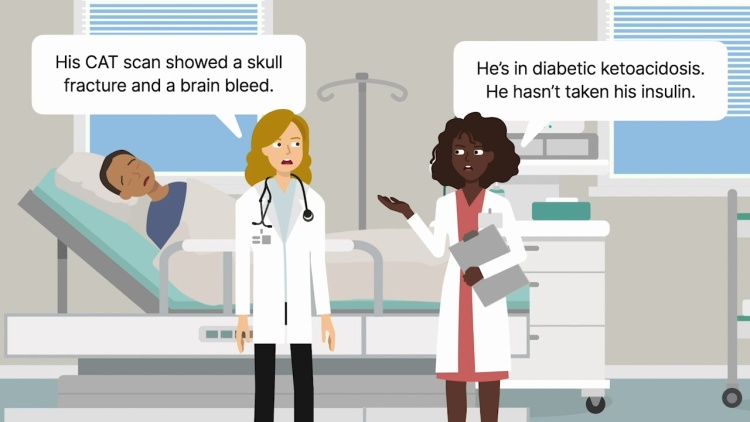State v. Smith
Ohio Court of Appeals
2007 WL 1165822 (2007)
- Written by Abby Roughton, JD
Facts
John Smith (defendant) punched Bryan Biser in the head during an argument. Biser lost consciousness and fell, striking his head. Biser was diabetic, and a blood-glucose test conducted in the emergency room after the altercation revealed that Biser’s glucose level was elevated. However, Biser refused treatment for his head injuries and diabetes and went home. Four days later, Biser was found unconscious in his apartment. Scans of Biser’s head revealed a possible skull fracture and brain bleeding. Biser’s blood-glucose level was extremely elevated, and he was in diabetic ketoacidosis, a lethal condition caused by failing to take prescribed insulin. Doctors also discovered that Biser’s bowels were necrotic. Biser died several hours later. The deputy coroner concluded that the cause of Biser’s death was homicide from blunt-force head injuries, and the state (plaintiff) charged Smith with felonious assault and involuntary manslaughter. At trial, a radiologist testified that he had never seen anyone function normally with a brain injury like Biser’s. A forensic neuropathologist disagreed with the coroner’s report and opined that Biser had technically died from diabetic ketoacidosis. However, the neuropathologist opined that Biser’s head injury substantially contributed to his death because the punch and fall had damaged the frontal lobes of Biser’s brain, rendering him apathetic and negatively impacting his ability to care for himself. The jury ultimately found Smith guilty. Smith appealed, arguing that his conviction was improper because the assault was not the proximate cause of Biser’s death. Smith asserted that instead, Biser’s diabetes and failure to take his insulin were unforeseeable intervening events that broke the chain of legal causation stemming from the assault.
Rule of Law
Issue
Holding and Reasoning (Harsha, J.)
What to do next…
Here's why 899,000 law students have relied on our case briefs:
- Written by law professors and practitioners, not other law students. 47,000 briefs, keyed to 994 casebooks. Top-notch customer support.
- The right amount of information, includes the facts, issues, rule of law, holding and reasoning, and any concurrences and dissents.
- Access in your classes, works on your mobile and tablet. Massive library of related video lessons and high quality multiple-choice questions.
- Easy to use, uniform format for every case brief. Written in plain English, not in legalese. Our briefs summarize and simplify; they don’t just repeat the court’s language.







